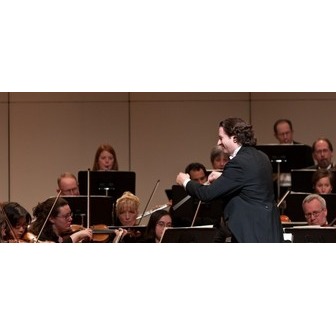Cheyenne Symphony Orchestra





The Cheyenne Symphony can trace its roots to the Cheyenne Little Symphony which was organized in 1935 by Mr. and Mrs. Clyde G. Ross, both prominent Cheyenne musicians. Some 25 people belonged to the early orchestra that was conducted by Mr. Ross, a violinist. Mrs. (Alice) Ross played the piano. Music came from the Ross' extensive library and the group prepared at least one complete symphony a year as well as other community performances. The chorus began even earlier and in 1920 was known as the Cheyennetes Chorus.
Both groups became inactive during WWII as many of the personnel were called to military service. In 1947 the orchestra became a part of the public school night school program and was able to use school facilities. In 1951 Mrs. Ross organized the Cheyenne Civic Symphony and served as its first president. Mr. Eugene Adams served as conductor. In the meantime a Cheyenne chorus had reorganized under the name of the Cheyenne Community Chorus and was lead by Gilbert A.D.Hart and later by Frank Howar.
In July of 1954 The Cheyenne Civic Symphony and the Cheyenne Community Chorus, joined forces creating new by-laws for a new group called the Cheyenne Civic Chorus and Symphony Orchestra. Mrs. Otis (Katherine) Halverson served as the first president of a very dedicated group of community leaders and music lovers. Will Schwartz served as the first conductor of this new group until 1957. The chorus and the orchestra often had different conductors and from 1957 to 1969 the group had a fairly long list of conductors. All that changed in 1969 when a new conductor was chosen that lead the group from 1969 to 1981.
Mr. Rex Yocum was the new conductor that would lead the symphony for over 12 years. During that period of time the orchestra and the chorus performed many fine concerts that featured guest artists of local and national fame. In 1969 the group changed its legal name to the Cheyenne Symphony & Choral Society and in 1974 became the Symphony & Choral Society of Cheyenne or SACSOC. Mr. Yocum was also the district music coordinator for Laramie County School District #1 and with his love of music and youth involved the students in many music performances. Performances were held in the auditorium at the old McCormick Junior High School, which is now the Emerson state office building on the corner of Capitol and 20th Street. Rex, who was affectionately known as "Mr. Music" conducted his final concert in April 1981. That was the first program performed in the new Cheyenne Civic Center.
The 1981/1982 season began a time of change for SACSOC. Robert Carter Austin took over as conductor and plans were made to change the symphony to a "professional" group. All members of the orchestra had to audition for their parts and for the first time they would be paid for their services. The rate of pay in 1982 for a principal chair was $25.00. More changes were to come. The orchestra and the chorus separated in 1988 and with a name change to the Cheyenne Symphony Orchestra (CSO) for the orchestra. Many of the chorus members formed today's Capital Chorale and the Cheyenne Chamber Singers. The CSO's baton has passed several times since 1981 from Robert Carter Austin to David Lockington in 1987 and from Mr. Lockington to Mark Russell Smith in 1993 and from Mr. Smith to Stephen Alltop in 2000 and finally in 2008 to our present conductor, William Intriligator.
Under each of these conductor's the symphony has continued its growth as a very fine orchestra and is in the top 200 professional orchestras recognized in the United States today. The group has been served by hundreds of dedicated board members and volunteers who have taken the symphony through many changes in the last 50 years. The CSO would not exist today without the dedication of these fine individuals. The Symphony will of course continue because of the many people who have always loved and music and the enjoyment and beauty it brings to all of us.
In 1958 the first Symphony Ball was held. This elegant event has continued uninterrupted over the years and remains one of the symphony's major fund raising events.
Explore Related Categories







